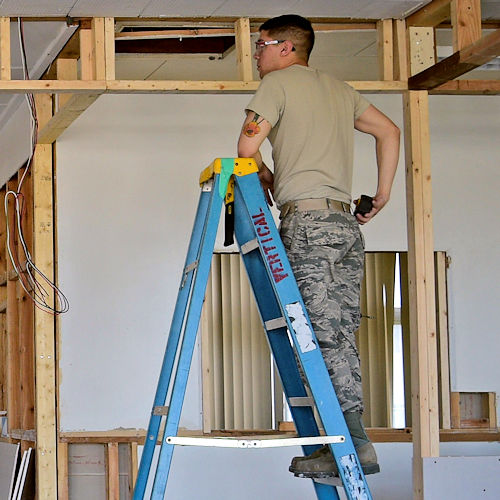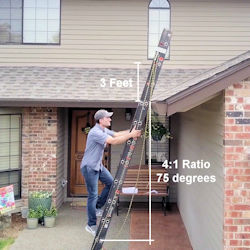Portable Ladders
Portable ladders help you access a work area or provide support while you work. Portable ladders make getting to a work area easy, but they can increase the potential for falls if not used properly. Portable ladders are versatile, economical, and easy to use. However, workers sometimes use them without thinking safety.
Falls from portable ladders are one of the leading causes of occupational fatalities and injuries. Here are some OSHA requirements for using portable ladders:
- The minimum clear distance between side rails for all portable ladders must be 11.5 inches (29 cm).
- The rungs and steps of portable metal ladders must be corrugated, knurled, dimpled, coated with skid-resistant material or treated to minimize slipping.
- Non-self-supporting and self-supporting portable ladders must support at least four times the maximum intended load; extra heavy-duty type 1A metal or plastic ladders must sustain 3.3 times the maximum intended load.
- The side rails must extend at least 3 feet (.9 m) above the upper landing surface. When that is not possible, the ladder must be secured and a grasping device such as a grab rail must be provided.
- A ladder extension must not deflect under a load that would cause the ladder to slip off its supports.
Ladder Angle
A non-self-supporting ladder (e.g., extension, straight etc.) should have a set-up angle of about 75 degrees (a 4:1 ratio of the ladder’s working length to set-back distance) to ensure proper stability.
Here's how to do it:
- Stand at the base of the ladder with your toes touching the rails.
- Extend your arms straight out in front of you. If the tips of your fingers just touch the rung nearest your shoulder level, the angle of your ladder has a 75 degree angle or 4:1 length/set-back ratio.
Knowledge Check Choose the best answer for the question.
1-3. To ensure proper stability, an extension ladder should be set-up with a _____ or a _____.
You forgot to answer the question!


